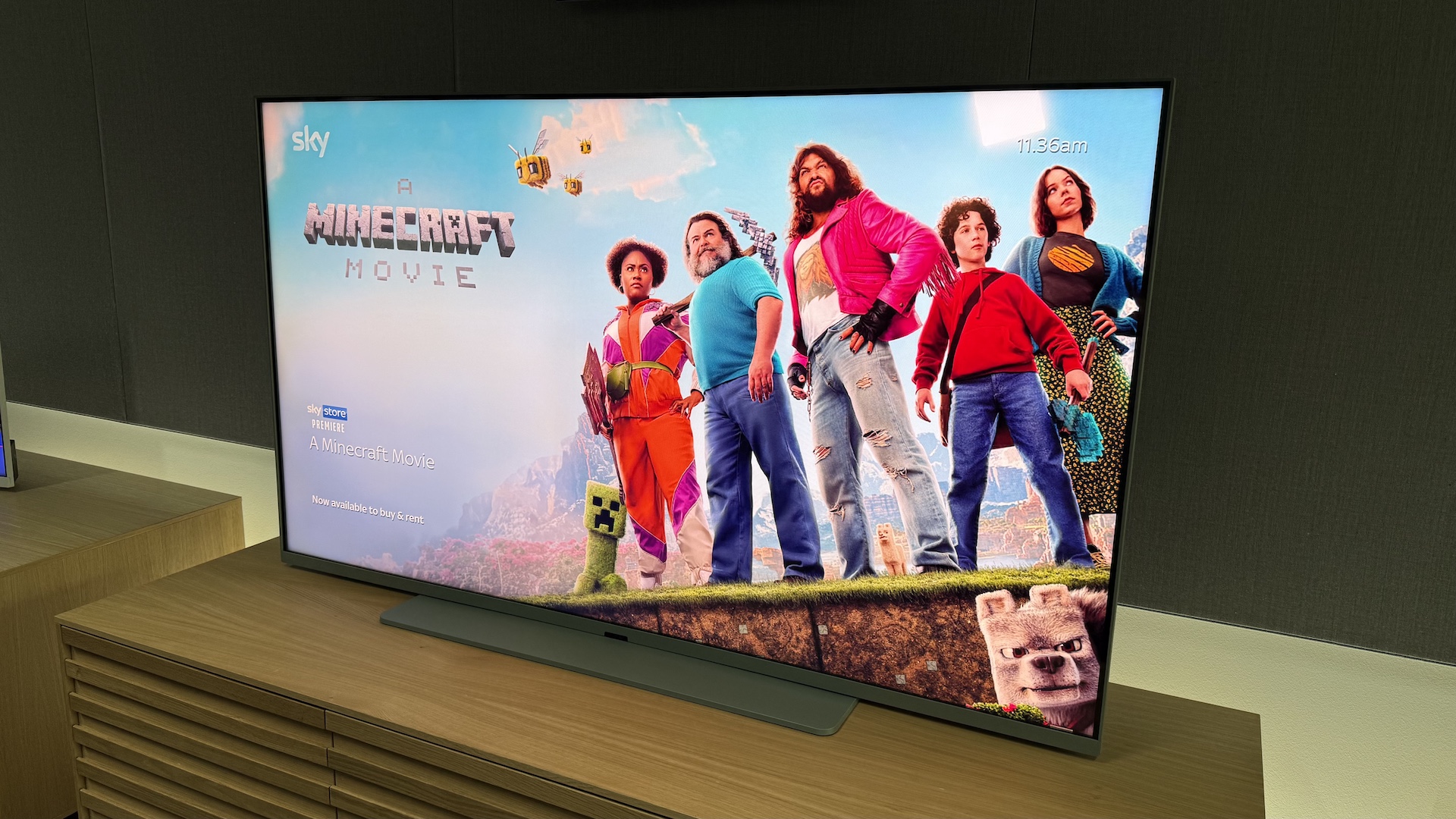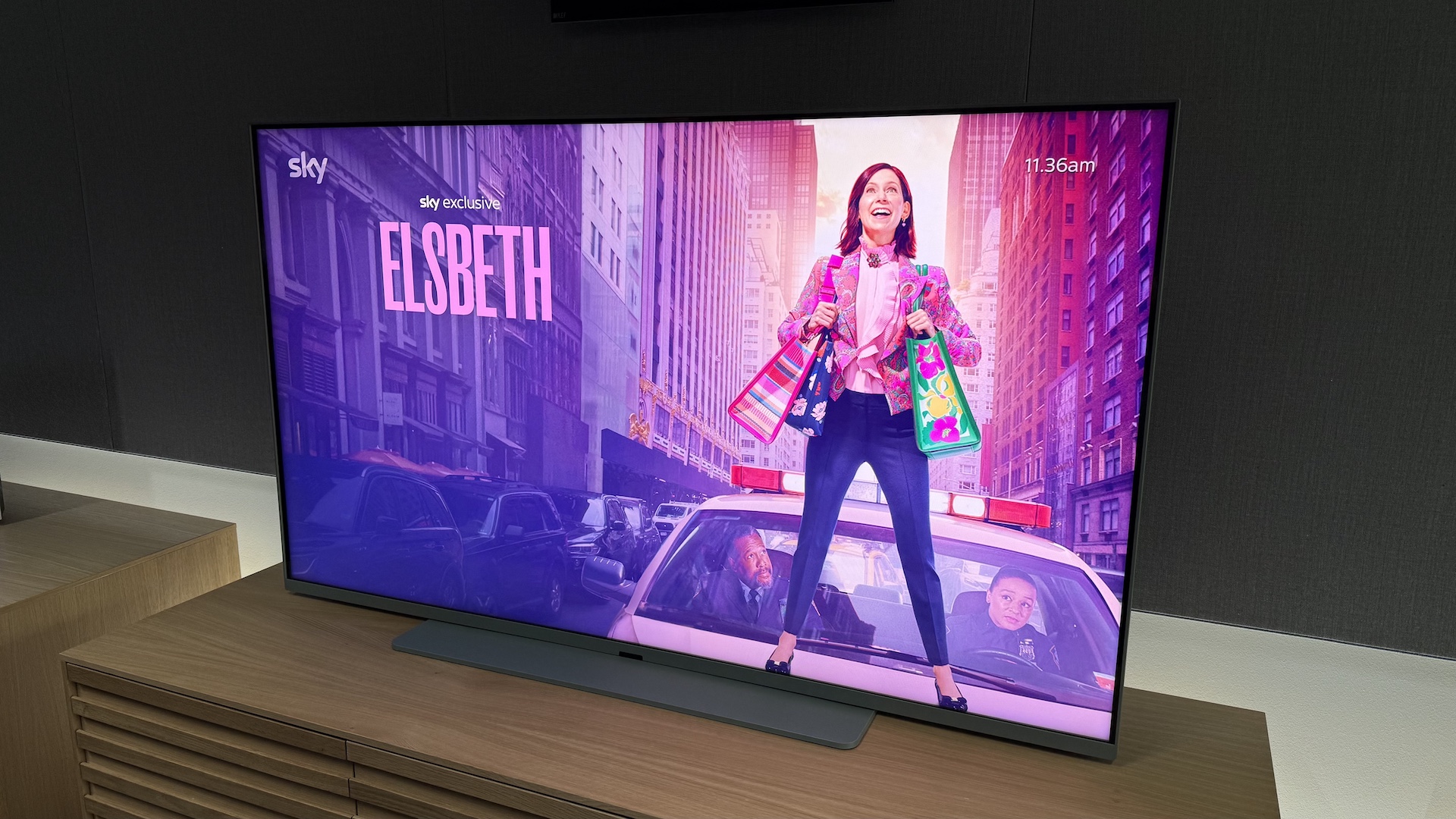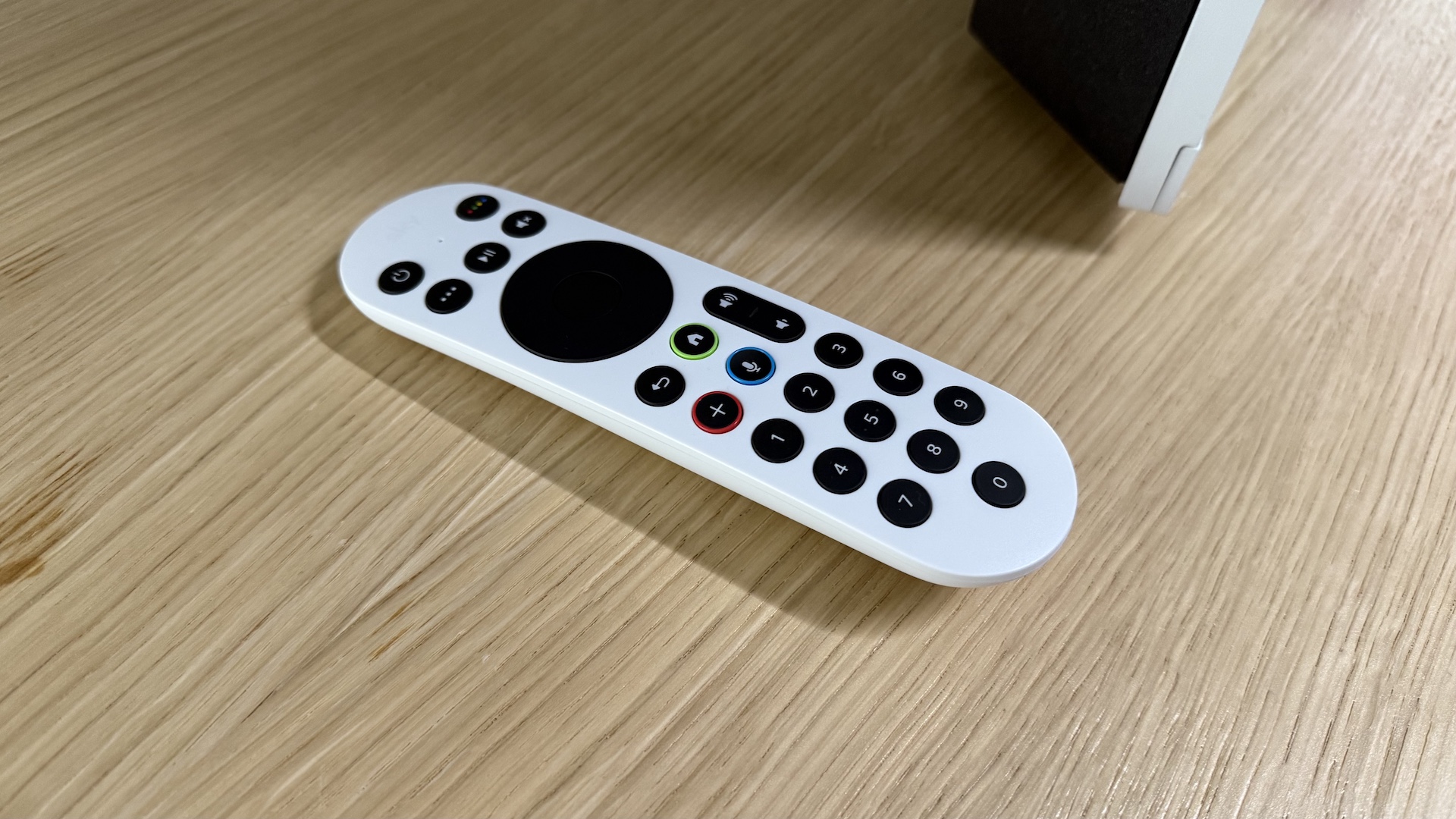Sky Glass Air hands-on: Streaming focussed TV set ditches the soundbar (and gets a £6pm price tag)
Sky’s new, budget-oriented smart TV might end up being the perfect spare room telly...


Two things make the Sky Glass gen 2 smart TV stick out from the crowd. First is its excellent interface that collates top streaming shows and movies into a single system for you to browse, no matter if they’re a Sky exclusive, a Netflix new release, or whatever third-party service your eyeballs are glued to. Secondly is its sound system, with a bombastic built in sound bar and upfiring speakers for Dolby Atmos surround sound listening.
But what if you’re into that interface and already have a great set of speakers at home? Or like the idea of a Sky-built telly, but can’t quite stomach the price tag of the premium sets and their top tier audio.
Enter Sky Glass Air. Revealed alongside Sky Glass gen 2 earlier this year, it’s a budget friendly offering that scales back the audio and high-end image features in favour of a value-oriented price tag.
Hitting stores in the coming days, we’ve had the pleasure of a hands-on viewing session with the new Sky Glass Air range, and are happy to report that, in this case, a cut price doesn’t mean cut corners. Here’s four things you need to know if you’re thinking of picking it up as your next telly purchase.

Sky Glass Air: The core specs and key features
- A solid screen: UHD Quantum Dot LCD, 4K resolution, support for Dolby Vision, HDR10 and HLG
- Slim and stylish: Three sizes available (48-, 55-, or 65-inches), in three colours (green, grey or white)
- High-spec HDMI: 3x HDMI 2.1 ports, with eARC and CEC support (plus USB-C and USB-A ports)
- Quick connectivity: Wi-Fi 6 and Bluetooth 5.0 LE and Classic, plus AirPlay 2 support
- Voice activation: Speak-to-wake microphones in TV and remote for hands-free voice control
- All your shows and movies in one place: Mix content from Sky TV and apps including Netflix, Disney+, Apple TV+ and Amazon into one playlist interface
- Cheap-as-chips monthly costs: 48-month interest free payment plans offered,from £6 a month
1. Slim style, sans soundbar
A quick glance at the Sky Glass Air, and you might be forgiven for thinking it's simply the standard Sky Glass gen 2 screen. It’s certainly following a similar design language with its coloured frame and Sky OS-forward interface. But look more closely and there are two key differences — gone are the built in soundbar and up-firing speakers, and as a result, the chunkier profile of full-fat Sky Glass is replaced with a slimline panel depth. It’s just 69mm thick on the 43-inch and 55-inch models, and slightly thicker at 77mm for the 65-inch model.
This is the key cost-cutting change between the two models, leaving you with a standard two speaker stereo system in the panel. It sounds fine out of the box, but if you’ve got a soundbar or speakers at home you’re happy with, you can easily beef things up over a HDMI eARC connection on the back of the screen.

They’re great looking tellies too — the bold ‘Cotton White’ casing is our favourite, but Sea Green and Carbon Grey finishes should fit nicely in more reserved living rooms, while a minimalist stand is both simple to set up clicking into place without screws. With no need for a satellite dish (all content here beams over Wi-Fi) and the need for loads of separate streaming devices to be plugged in negated by Sky’s all-in-one streamer aggregating interface, cable management is kept to a minimum, too.
Get exclusive shortlists, celebrity interviews and the best deals on the products you care about, straight to your inbox.
However, the bottom edge of the screen has very low clearance off of the surface it stands on. So if you’re planning on pairing with a soundbar, you may want to consider wall-mounting the screen, for fear of obscuring the bottom area of the picture.
2. A scintillating screen
Sky Glass Air makes use of a 4K Quantum Dot screen. It’s not a top-tier pricey OLED, but its LCD panel punches above its weight class in terms of pricing. Though it uses global dimming rather than dining zones to control the contrast between light and dark sections of a picture, it does well to avoid some of the key drawbacks of the technology, avoiding washed out dark scenes and halo effects when light sources interact with black canvases. It’s a step down from the Sky Glass gen 2, sure – but not a huge one that the average viewer would be able to spot outside a side-by-side comparison.

One of the key, convenient tricks of the Sky Glass Air experience is its Auto viewing mode. Though you can manually set custom picture settings, or dial through presets such as Sport, Music and Vivid, Sky uses its knowledge of the sort of programming you’re watching to automatically tune the picture based on what you’re currently viewing. Without you needing to lift a finger, Glass Air is always looking its best.
3. The main event — the Sky OS interface
Our absolute favourite part of the Sky Glass experience — whether on this new Sky Glass Air model or the top-tier Sky Glass gen 2 — is the Sky OS interface, which is essentially identical across all of Sky’s TV models, no matter the price or size.
In a nutshell, it pulls all of your streaming services’ content into one place, alongside Sky’s own shows and live TV offerings, letting you browse and play content without having to individually dive into separate apps. So your next-up Netflix watch sits alongside your Disney watchlist and your half-finished Apple TV+ film. Sky smartly organises and aggregates from each service, so similar genres of shows and movies can sit next to each other, even if they’re from competing apps. In a household full of different viewers, you can keep your individual favourites separate via Playlists, personalised to each person.

You’ve plenty of options when it comes to searching for shows too, whether that’s via the remote control, browsing Sky’s spot-on recommendations, or using voice search — with mics built into both the TV and the remote control itself. Search for content based on genre, director, celebrity stars, topics and more — Sky OS will throw up all the shows and movies that match its database. With so many services to parse, it makes hunting down hidden gems from across your available catalogues as easy as opening your mouth.
4. Sky on a budget
The most attractive part for cash-strapped viewers might be the price though — you can get the Sky Glass Air for as little as £6 a month, depending on the size and payment plan you go for. Over a 48 month interest free contract, the 43-inch model kicks off at £6 a month, rising to £10 a month for the 55-inch model, and £13 a month for the 65-incher. Halve the contract length, double those monthly prices.
You can also of course pick the TVs by purchasing them outright — the 43-incher costs £309, the 55-inch Sky Glass Air is £509, and the 65-inch bi boy is £649. For the 43-inch model that feels particularly good value — TVs at that price at that screen size can be a bit shabby, and Sky Glass Air is anything but that.

But there’s a bit of a catch here of course — when it comes to buying a TV from Sky, hardware costs are only part of the picture. Though you can get a basic TV signal in over an aerial to Sky Glass Air, to get all the smart features like voice control, playlists and content aggregation — not to mention access to Sky TV shows and movies — you’re going to have to cough up for a Sky TV subscription too. They start at £15 a month, bundling in Sky’s flagship TV channels and an ad-supported Netflix subscription. With so much of what makes Air special being that Sky interface special sauce, you’re not going to want this screen without that subscription. So, in reality, it’s more like a starting price of £21 per month.
That’s still a pretty good value offering though. It’s a great interface, solid picture quality, and a smart feature set crammed into the Sky Glass Air range. It’s easy to imagine this becoming the go-to TV for cash-strapped telly addicts, or those that want a convenient second screen somewhere else in their already-Sky-equipped households.
Fancy picking one up? Sky Glass Air goes on sale on June 10th, and can be ordered straight from Sky, or via Currys stores.

Gerald Lynch is the Editor-in-Chief of Shortlist, keeping careful watch over the site's editorial output and social channels. He's happiest in the front row of a gig for a band you've never heard of, watching 35mm cinema re-runs of classic sci-fi flicks, or propping up a bar with an old fashioned in one hand and a Game Boy in the other.
You must confirm your public display name before commenting
Please logout and then login again, you will then be prompted to enter your display name.
-
 Ressence and Marc Newson team up for a watch like nothing else
Ressence and Marc Newson team up for a watch like nothing elseTwo design obsessives, one mind-bending collaboration
By Morgan Truder Published
-
 Mattias Gollin just turned the Vans Authentic into a $750 art piece
Mattias Gollin just turned the Vans Authentic into a $750 art pieceHand-beaded, wildly exclusive
By Morgan Truder Published
-
 Greenwich Observatory is about to get an enormous new moon sculpture – and you’ll be able to trace its surface
Greenwich Observatory is about to get an enormous new moon sculpture – and you’ll be able to trace its surfaceOut of this world
By Hermione Blandford Published